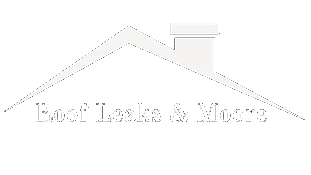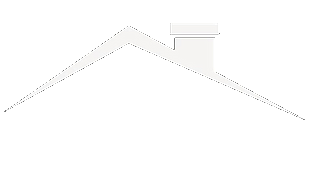If you are responsible for maintaining an educational facility, you know that one of the most important aspects of your job is to ensure that all facilities are safe, functional, and well-maintained. One of the most critical parts of a building’s structure is its roof, as it plays a significant role in protecting the building and its occupants from the elements. However, roofs have a limited lifespan, and sooner or later, they will need to be replaced.
This is where long-term budgeting for educational roof replacements comes into play. Long-term budgeting for educational roof replacements is essential for ensuring the financial sustainability of your educational facility. By planning ahead, you can avoid unexpected costs and ensure that you have the necessary funds to replace your roof when the time comes.
This article will provide you with a comprehensive guide to long-term budgeting for educational roof replacements, including tips and strategies for successful budgeting. Whether you are a school administrator, facilities manager, or maintenance supervisor, this article will help you develop a plan that will ensure your facility’s roof is always in excellent condition and your budget is always under control.
Importance of Proper Roof Maintenance and Replacement
You need to understand the importance of proper roof maintenance and replacement. It’s not just about keeping your building dry – it’s about ensuring long-term financial sustainability.
Regular roof maintenance benefits include identifying and addressing potential problems before they become major issues, extending the lifespan of the roof, and avoiding costly emergency repairs. By implementing a regular roof maintenance plan, you can save money in the long run by avoiding the need for premature roof replacement.
In addition to regular maintenance, it’s important to understand the cost effectiveness of regular inspections. Regular inspections can identify small issues before they become major problems, leading to a more cost-effective solution.
Waiting until a problem becomes a major issue can lead to costly repairs or even full roof replacement. Therefore, it’s essential to invest in regular inspections and maintenance to ensure the longevity of your roof.
Understanding the age and condition of the existing roof is the first step in creating a long-term budget plan for roof replacement.
Understanding the Age and Condition of the Existing Roof
To effectively plan for the maintenance and replacement of your educational facility’s roof, it’s crucial to understand the age and condition of the existing roof.
Conduct regular inspections to identify signs of damage, such as cracks, leaks, and rotting materials.
By assessing the lifespan of the roof, you can make informed decisions about when to schedule maintenance and repairs, and when it’s time to plan for a full replacement.
Conducting Regular Inspections
Regular inspections are essential for ensuring the longevity of educational roofs. They allow for early detection and prevention of potential issues. The frequency of inspections should be determined based on the age and condition of the roof, as well as the climate and environment in which the building is located. Generally, inspections should be conducted at least twice a year, in the spring and fall, and after any major weather events, such as a heavy storm or high winds.
The benefits of early detection can’t be overstated. By identifying minor issues, such as cracks or leaks, during an inspection, they can be repaired before they turn into major problems that require costly repairs or even a full roof replacement. Additionally, regular inspections can help to extend the life of the roof, as any issues can be addressed before they cause significant damage.
With a proactive approach to roof maintenance, long-term budgeting for educational roof replacements can be more manageable. In the next section, we’ll discuss identifying signs of damage and how to address them.
Identifying Signs of Damage
When inspecting your educational facility’s roof, it’s important to be able to identify signs of damage early on. Common causes of damage to roofs include extreme weather conditions, poor installation, and lack of maintenance. Prevention is key to minimizing the impact on educational institutions, as damaged roofs can lead to costly repairs and disruptions to daily operations.
Some signs of roof damage to look out for during inspections include cracks, leaks, and blistering. These issues can weaken the structure of the roof and lead to more extensive damage if left untreated. Regular inspections and prompt repairs can help extend the lifespan of your roof and save your educational institution from unnecessary expenses.
Assessing the lifespan of the roof is the next step in developing a long-term budget plan for roof replacements.
Assessing the Lifespan of the Roof
You may be curious about how long your roof will last before needing significant repairs or replacement. Assessing the condition of your roof is a crucial step in long-term budgeting for educational roof replacements.
The lifespan of a roof can vary depending on a variety of factors, including the type of material, quality of installation, and level of maintenance. To assess the lifespan of your roof, you should have a professional inspect it regularly.
Factors such as the age of the roof, level of wear and tear, and any signs of damage will be taken into account when projecting the lifespan of the roof. By assessing the condition of the roof and estimating its lifespan, you can better plan for the financial sustainability of your educational institution’s roof replacement needs.
Estimating the cost of materials and labor is the next step in the long-term budgeting process for educational roof replacements.
Estimating the Cost of Materials and Labor
To accurately budget for educational roof replacements, it’s important to estimate the cost of materials and labor. This can be a difficult task, as the cost of materials and labor can fluctuate greatly depending on a number of factors. One cost-saving measure to consider is negotiating contracts with roofing contractors to ensure that you are getting the best possible price.
When estimating the cost of materials, it’s important to consider the type of roofing material that will be used, as well as the size of the roof. For example, a flat roof will require different materials than a sloped roof, and a larger roof will require more materials than a smaller one. It’s also important to consider the cost of labor, which can vary based on the level of experience of the roofing contractor. By taking these factors into account and negotiating contracts with roofing contractors, you can create a more accurate estimate of the cost of materials and labor for your educational roof replacement project.
Developing a comprehensive long-term budget plan for educational roof replacements requires careful consideration of several factors. One of the most important factors is accurately estimating the cost of materials and labor, which can be achieved through cost-saving measures such as negotiating contracts with roofing contractors. Once you have a clear estimate of the costs involved, you can begin to develop a budget plan that will ensure financial sustainability for your educational institution.
Developing a Comprehensive Long-Term Budget Plan
As you delve into developing a comprehensive long-term budget plan for educational roof replacements, it’s important to set realistic goals that take into account the school’s financial situation.
Prioritizing roof replacement needs based on urgency and potential impact on educational operations is crucial. This ensures that limited funds are allocated appropriately.
By allocating funds appropriately, you can maximize the benefits of your long-term budget plan. This will ensure that educational operations are not disrupted by unexpected roofing failures.
Setting Realistic Goals
When thinking about setting realistic goals for your educational roof replacements, it’s important to envision what the future may look like for your institution. Take into consideration the size of your institution, the number of buildings, and the current state of the roofs. It’s crucial to set goals that are both attainable and financially viable.
This means creating a budget plan that takes into account the cost of materials, labor, and any potential unexpected expenses that may arise. By setting realistic goals, you can ensure that your institution is financially prepared for the long-term maintenance and replacement of your roofs.
In order to set realistic goals, it’s important to prioritize the roofs that need replacement the most. This means identifying which roofs are in the worst condition, which ones are most critical to the overall safety and functionality of your institution, and which ones will have the most significant impact on your budget.
By prioritizing the replacement needs, you can ensure that you are allocating your resources in a way that makes the most sense for your institution. This will help you to create a long-term budget plan that is financially sustainable and can support the ongoing maintenance and replacement of your roofs.
Prioritizing Roof Replacement Needs
You need to prioritize which roofs require replacement the most by identifying their condition, criticality, and impact on your budget.
One way to do this is by creating a roof replacement timeline that outlines when each roof is due for replacement based on its age and condition.
You should also consider the criticality of each roof, such as its impact on the safety and functionality of the building.
Additionally, you should evaluate the financial impact of each roof replacement on your budget and prioritize those that are most feasible and necessary.
It’s important to note that prioritizing roof replacement needs also involves identifying funding sources for each project.
You should explore various funding options, such as grants, loans, and partnerships with local organizations or businesses.
By identifying funding sources early on, you can allocate funds appropriately and ensure that each roof replacement project is financially sustainable.
Allocating Funds Appropriately
To make sure you have enough money for each roof replacement project, it’s crucial to allocate funds appropriately. Here are some budgeting strategies to help you with financial planning for long-term roof replacements:
- Create a comprehensive inventory of all roofs of your educational institution. Identify the age, condition, and expected lifespan of each roof. This information will help you prioritize which roofs need immediate attention and which can wait.
- Based on the inventory, estimate the cost of replacing each roof. This estimation should include the cost of materials, labor, and any other expenses associated with the replacement.
- Allocate funds based on priority and cost estimation. This means that roofs in worse condition and with shorter expected lifespan should be given more priority and allocated more funds.
By following these budgeting strategies, you can ensure that you’re allocating funds appropriately and planning for financial sustainability in the long run. In the next section, we’ll discuss some tips and strategies for successful long-term roof replacement budgeting.
Tips and Strategies for Successful Long-Term Roof Replacement Budgeting
Ironically, successfully budgeting for long-term roof replacements involves not relying on short-term cost-cutting measures. Instead, it requires a strategic and collaborative approach to forecasting and data analysis.
One key tip for successful long-term budgeting is to involve all stakeholders in the process, including maintenance staff, school administrators, and finance officers. This ensures that all perspectives are taken into account when making decisions about the budget.
Another important strategy is to conduct a thorough analysis of the current state of the roofs and forecast future maintenance needs. This includes considering factors such as age, weather conditions, and the materials used in the roof construction.
By taking a proactive approach to maintenance and replacement, schools can avoid costly emergency repairs and ensure that they have the funds necessary to complete the replacement project when the time comes.
In conclusion, successful long-term budgeting for roof replacements requires a strategic and collaborative approach, along with careful forecasting and data analysis. By following these tips and strategies, schools can ensure financial sustainability and avoid unexpected expenses in the future.



